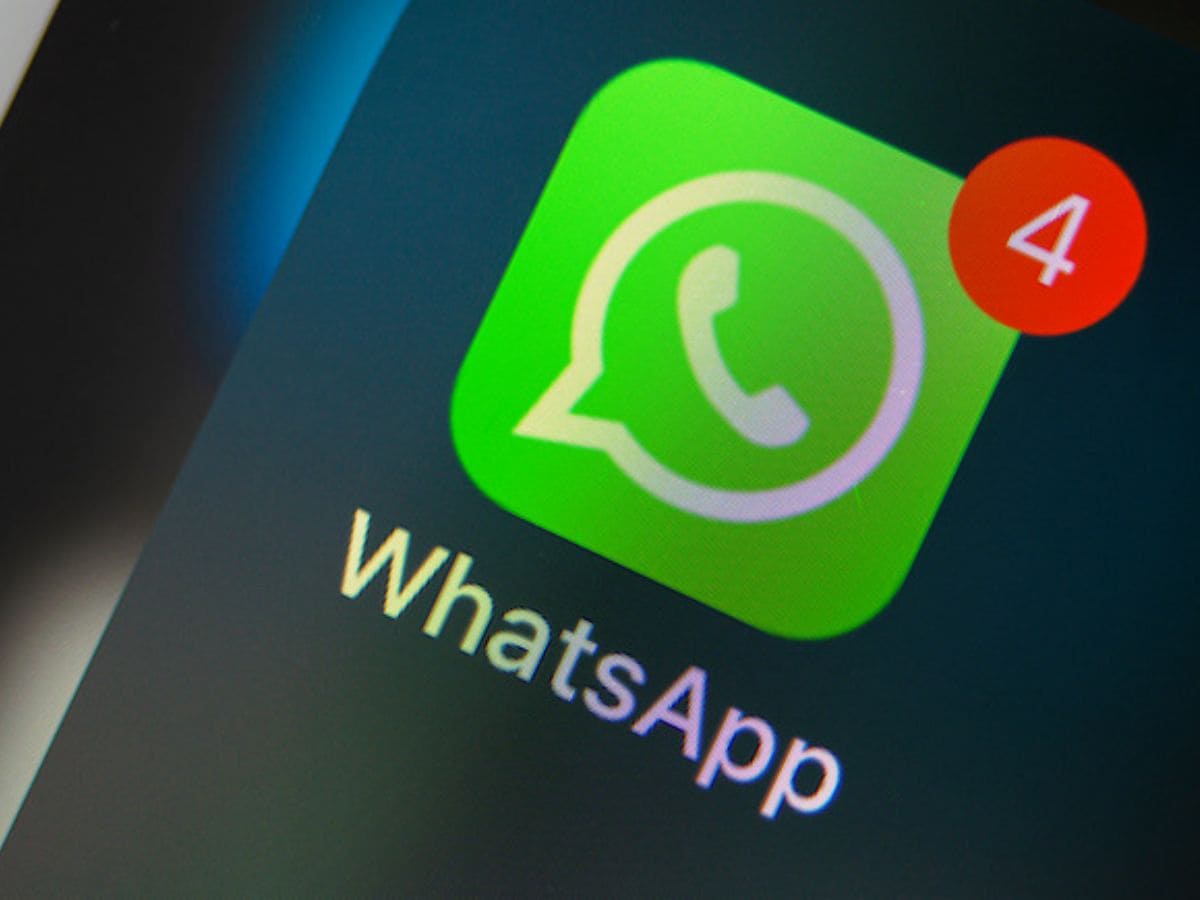IMAGINE if every text you’ve ever sent or received was being watched by a mystery stranger – or even someone you know. Well, that might be true.
There are loads of ways that sinister spies can have a nose around your private text conversations, so knowing the signs is essential.
9
We reveal the hidden and forgotten settings you need to check.
1 – CHECK YOUR ACCOUNT
If you’re worried about your texts being spied on, your first port of call should be checking settings in your main messaging accounts.
After all, if someone has access to your Apple or Google account, or WhatsApp, then they have unrestricted access to your texts too.
That’s because they can simply log in as you and read everything you’re up to. They can send texts as you, and trawl through your old chats if they want. It’s about as nightmarish as it gets.
Thankfully, most major tech services will let you see who is logged in on your account and kick them out.
And once you do kick the person out, make sure to change your password and add a second layer of verification (like a code sent over text or an authenticator app) in your app settings.
For Apple users, you can see a list of the devices where your Apple Account is logged in.
Just go to Settings > [Your Name] on your Apple device, then scroll down to see the device. If you don’t recognise one, just tap it and then choose Remove From Account.
You can also do this on the account.apple.com website.
For Google (and Android) users, go to your Google account, then choose Security > Your Devices > Manage All Devices.
Once you’re there, you can then easily sign out of any unrecognised devices.
You’ll find other major apps like Facebook and Netflix all have similar settings – so it’s worth checking them all every so often.
2 – MYSTERY NIGHT SPIKE
You also need to watch out for someone close to you reading your texts in the middle of the night.
Maybe you don’t have a phone passcode, or it’s someone you’ve shared your code with, or perhaps a nosy partner or family member who has seen you tap it in.
First, go into Settings > General > iPhone Storage on your iPhone, and scroll down to the apps.

9
Change the filter from Size to Last Used Date, which shows apps by when they were most recently used.
If you see a chat app there that you know you didn’t use recently (or in that order), then someone has been having a peek.
Next, go to Settings > Screen Time and turn it on. It’s a handy feature to track how much you’re using your iPhone – but has a hidden spy-busting benefit too.
Head into Settings > Screen Time > See All App & Website Activity, then scroll to Pickups. Now look for First Pickup.
This shows when your iPhone was first picked up and opened on a given day, so you can see if someone unlocked it before you’d woken up.
And third, go to Settings > Screen Time > See All App & Website Activity, then look for Most Used for today.
Now look for an app you’re worried is being accessed – like WhatsApp.
You can see the exact hour slots for when that app was used, as well as the amount of time spent on it.

9
So if someone opened your WhatsApp at 3am for five minutes, you’ll know about it.
If you have an Android phone, you can use a similar trick.
But instead of Screen Time, you’ll be looking for a Google Feature called Digital Wellbeing.
You can tap on individual apps in Digital Wellbeing, and then check their Hourly usage – showing you when an app has been active.
3 – UNENCRYPTED CHAT APPS
Lots of popular chat apps are totally encrypted.
That’s true of apps like WhatsApp, Signal, Facebook Messenger, and Apple’s iMessage.
That means when you send a text, it gets all jumbled up into an unreadable mess.
And as it flies across the internet, it’ll stay jumbled.

9
Then, when it reaches your recipient, they have a special key to unlock it. No one else has that key.
This key will turn it back into the original text.
The idea is that no one can see the message as it’s sent over the internet. You ideally want your stored messages encrypted too (this is called end-to-end encryption).
For instance, WhatsApp can’t read the texts you send in the app, because they’re jumbled up.
And your internet provider can’t read those messages either, because it’s just seeing garbled data.
This also means if the Government, police, or spies want to snoop on your texts, they can’t. They could get a warrant and demand that WhatsApp hand over your messages, but they wouldn’t be able to read a thing.
The other benefit is that without a backdoor into these texts, hackers can’t read them while they’re in transit either. They’d have to break into your phone instead, which is difficult.
So if you’re using non-encrypted chat apps, it puts you in greater danger.
DON’T LET ENCRYPTION PUZZLE YOU

Here’s some advice from The Sun’s tech editor Sean Keach…
Encryption is easy to forget about.
You can’t really see it, it’s hardly exciting to think about, and if it works properly, then you never have to.
But it’s important because it prevents some of the most effective hack attacks.
Not having your data encrypted is a bit like removing all the curtains and doors from your house.
You (probably) wouldn’t choose to live in a glass house where every wall was a window without blinds – so don’t use apps that are much the same. Not for anything important, anyway.
Think about all of the texts you’ve ever sent.
Most of them are probably boring.
But some of them will be personal and sensitive: private conversations with loved ones, chats about finances or medical issues, and even login details you’ve shared with family.
Don’t leave these in an unlocked box just waiting to be scooped up by a savvy hacker.
Using encrypted apps is one of the best defences against cybercrime, and it costs nothing.
Picture Credit: Sean Keach
For a start, texts sent via old-school SMS aren’t encrypted.
Popular chat app Discord doesn’t encrypt text chats – they’re just stored on servers. Most video games won’t encrypt text conversations you have either.
Make sure you’re not having any sensitive conversations unless you’re sure that the app you’re using is end-to-end encrypted.
4 – SECRET CONTACT CODE
This one is a dead giveaway that you’re not texting who you think you are.
It relates to encryption. Remember: encryption scrambles your texts, and only the recipient with the correct key can unscramble them.
Well, hackers have ways of getting around this, so tech giants have come up with a key-verifying system to put your mind at ease.
How does it work? Move to here
Let’s start with iPhone owners, who can use Contact Key Verification in the Messages app.
Turn it on by going into Settings > Name > Contact Key Verification > Verification in iMessage.

9
This makes sure that you are speaking to the person with a matching key – and not an impostor intercepting your texts.
Once the setting is on, it’ll automatically verify the Contact Key when you chat with another person. You’ll get an alert if there’s an error, which Apple says helps “make sure that even a very sophisticated attacker can’t impersonate anyone in the conversation”.
You can also manually do this by tapping Conversation Details, and then generating a code at the same time to share and compare.
WhatsApp has a similar feature called Security Code.
Just open a chat with a pal, then tap the contact’s name.
Now tap on Encryption to view a QR code and a 60-digit number.
Next time you’re with your pal, you can scan the other person’s QR code or just visually compare the 60-digit number.
If they match, it’s a guarantee that no one is intercepting your texts (or calls!).

9
5 – MYSTERIOUS SPY APPS
Every so often, take a look at your recently installed apps.
Notice anything strange? Anything that shouldn’t be there? Any apps that you don’t recognise? That’s a major red flag.
Unexpected apps that you don’t recognise are a serious sign that someone is meddling with you.
It might have been installed by someone close to you (maybe they grabbed your phone while you slept) or installed on your device as part of a hack attack (perhaps you clicked a dodgy link or opened a rogue email).

9

9
Either way, once a “spyware” app is on your phone, hackers can run riot with their surveillance.
And don’t be fooled by how the app appears: it might pretend to be a regular app with a normal function, but it is actually spying on you.
So even if it looks like a calculator and works like a calculator, it might still be spying. The only warning sign is that you didn’t install it. That’s never right.
If you ever find any app that you don’t recall installing, delete it right away. It could be tracking every single text you send – and potentially much more.
6 – UNEXPLAINED TEXTS
This sign can come in two forms.
The first is when you receive texts from family members that don’t seem to make sense or flow from your previous conversation.
Maybe they’re having a mad day. But more likely, someone has broken into your text conversations.
What this usually means is that someone is texting your friends and family as you – and then deleting the evidence.

9
So when you look at your phone, there’s nothing there.
But you’re catching it out because your friend or family member has replied to a text – and you’ve seen it before the snooper has deleted it.
Check in with that person immediately (and not over text!) to ask them about what conversations you’ve had recently.
Chances are, they’ve received texts from you offering them a lucrative money-making deal, asking for a bit of quick cash, or requesting some security info (like a log-in code for an app).
It’s best to do this over the phone, or better yet in person – so you can make sure your conversation isn’t being meddled with.
The second sign to watch for is when a text contains strange strings of letters, numbers, and symbols.
This might be a symptom of some spyware installed on your phone.
Spyware – software built to watch what you’re doing – isn’t meant to be there, and can result in bugs.
KEEP YOUR PHONE UPDATED

Here’s another tip from The Sun’s tech expert Sean Keach…
If you want another easy way to protect yourself from dangerous attacks, just update your phone.
It sounds simple, but plenty of people forget about it.
Tech giants spend loads of money uncovering dangerous loopholes that hackers can exploit to break into your phone.
And they release these as security fixes via updates for your phone and apps.
If you don’t download them, you’re leaving your gadgets wide open to snooping.
What to watch: If you’ve got a very old phone, it might no longer be supported by the creator.
That means it’s no longer getting software updates.
So if you’re finding yourself unable to update your phone, you may have been cut off.
That means you won’t get the latest software updates to fix security bugs, leaving you in serious cyber-danger.
If that’s the case, you’ll want to upgrade to a newer model as soon as possible. It’s not worth the risk.
Picture Credit: Apple / The Sun
This can sometimes manifest as strange strings of text (including coded instructions meant for a computer) that don’t make sense to your human eyes.
It’s not a guarantee that you’re being spied on, but it’s definitely a sign that something is amiss.
Just like before, look for and delete any mysterious apps on your device that you don’t remember installing, update your phone’s software, and reboot it completely (to wipe any ‘active’ hacks that live in your phone’s short-term memory).









